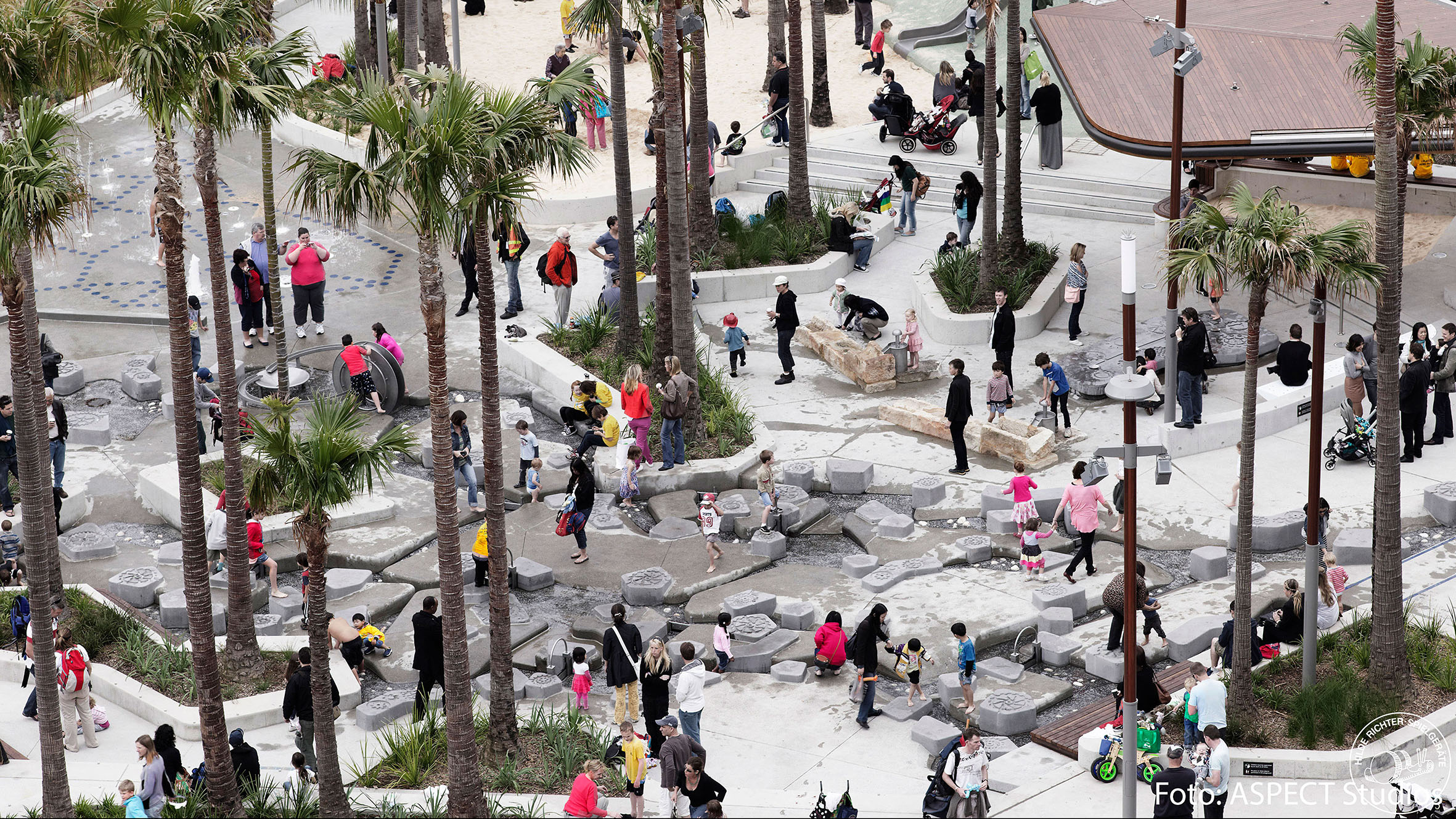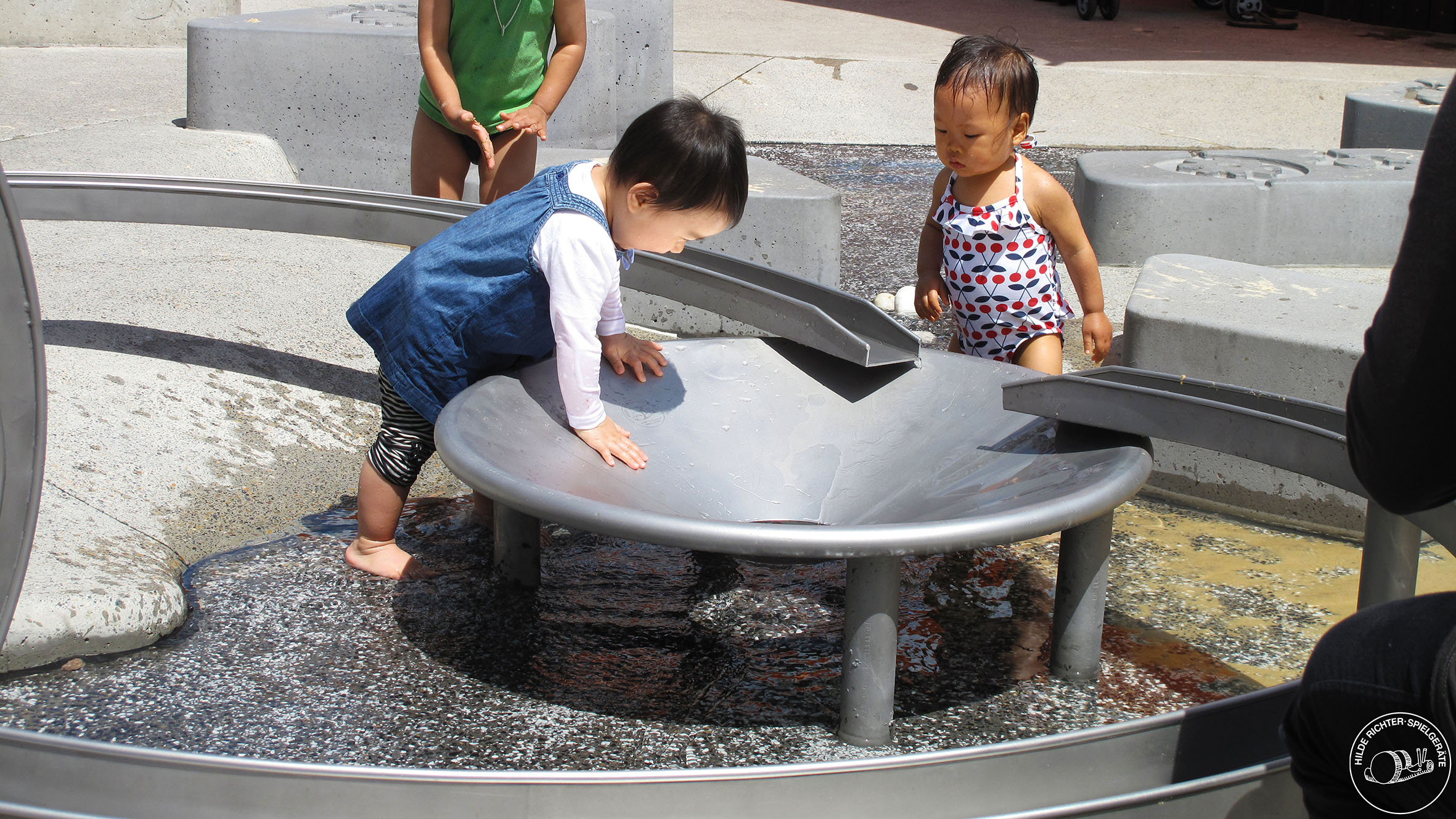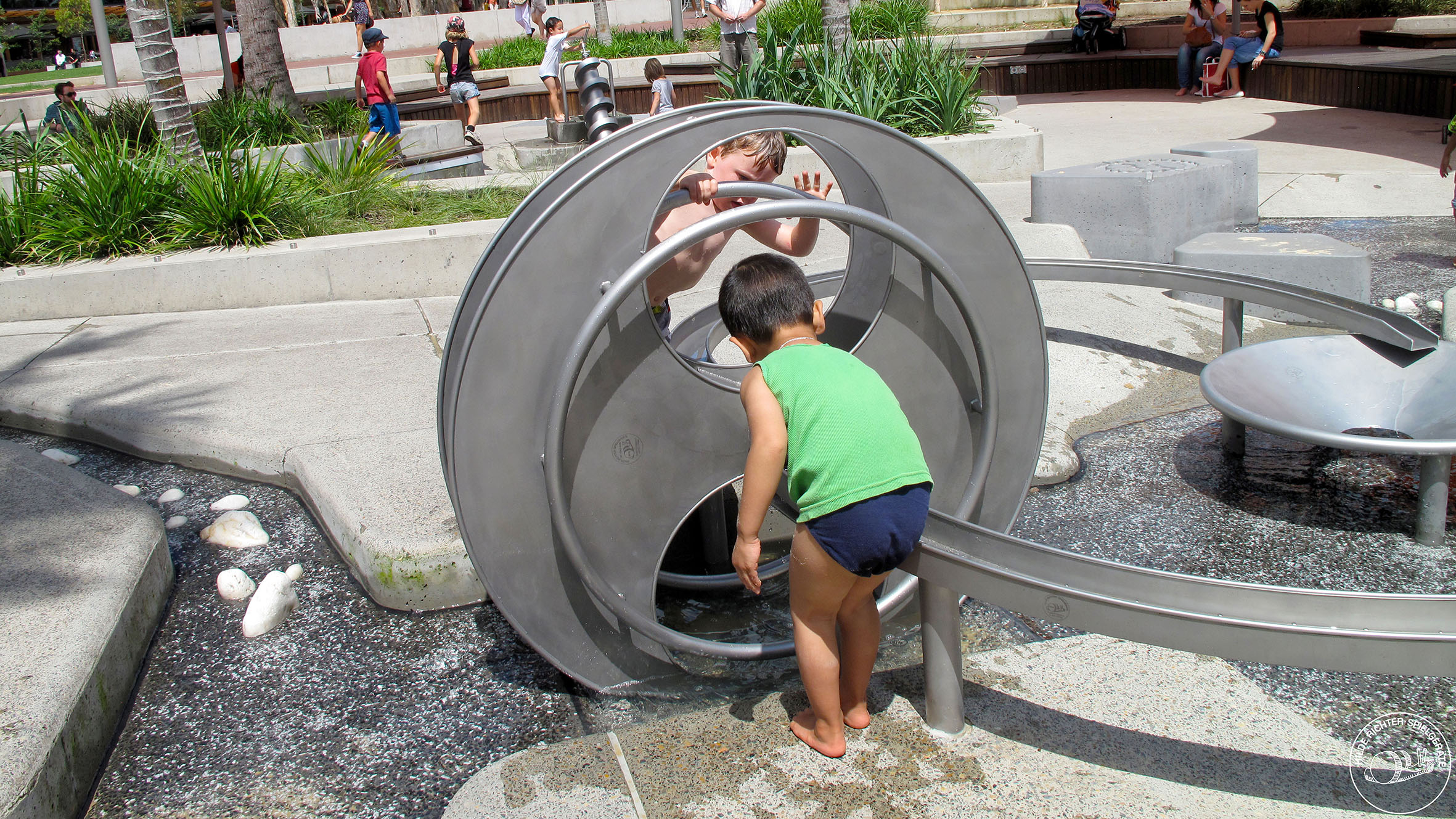
Making public spaces family friendly will make them more attractive to all and help boost our city centres, says Paul Collings, MD of Timberplay.
PUBLIC realm belongs to all members of the public, so the needs of children and young people should be considered when designing public spaces. However, these spaces are more often designed around the needs of adults, which can make them seem unfriendly and uninteresting to children. In recent decades, our towns and cities have been designed overwhelmingly around the car driver to the disadvantage of non-car drivers. which includes children as well as the elderly, the poor and those with disabilities. Fortunately, there now seems to be an aptitude in some quarters to change this.
Children have an innate desire to play; it’s how they develop so they will always look for play value. In the past they would have found spaces with that play value naturally by roaming into fields, beaches, riversides and woodlands as many older adults will remember. Today’s children are chaperoned by adults until a much older age than they used to be, so instead of being allowed to play outside with friends whilst adults go shopping, they are often dragged along. This is sad enough, but if the public spaces they encounter along the way are not designed with their needs in mind, it makes for an even more woeful experience.
Public spaces are at their best when they are vibrant, people feel safe there and enjoy the atmosphere. Making those spaces family-friendly helps to create that vibrancy. We’ve all seen situations where a parent has wanted to stop for a moment to enjoy some space, perhaps with a coffee but the child is bored. This creates tension. Similarly, it’s not much fun for a child being dragged through a space at breakneck speed to get the trip over and done with as quickly as possible. Designing those spaces for all, will make the spaces much more successful, increasing dwell time and associated spend in nearby shops and cafes, bringing about a greater connectedness with the city, opportunities for interactions with fellow citizens and an improvement in people’s lives and mental health.

One of a few positive things I witnessed during the first lockdown was families walking or cycling together. While that’s not unheard of, I got a strong sense that for some of those families, it had previously been a rarity. The fact that our parks in particular became destinations during the pandemic, has I hope, bolstered public recognition of the vital importance of these spaces. Conversely, our city centres have taken a battering with shops and the hospitality sector under enormous pressure. We simply have to help these businesses. Some of that might be through direct government support or taxation changes, but we can also take advantage of the pent-up demand caused by lockdown and make our public spaces more attractive for all to encourage footfall.
Planners often try to deal with the competing conflicts of the use of public space by compartmentalising it. A good example is skateboarders. Viewed as a nuisance, their experience is of constantly being moved on from public spaces. But a public space is their space too and their presence can make the space more vibrant and safer. If your teenage daughter was walking home alone through a city at night, wouldn’t you be happier if there were skaters using that space acting as informal eyes and ears? Yes, some skaters can be inconsiderate in public spaces but couldn’t that be dealt with through engagement? Instead, the preference seems to be to ban the skaters and offer them a designated skatepark as compensation. Maybe it’s a reasonable trade off, maybe not.
The same thing has happened with children’s ability to play, which has been hugely restricted due to loss of the right to roam. In compensation they have been given designated playgrounds. Are we saying that we know play is important, but it’s not so easy to play these days so here is a special place to play? Or are we saying that this is the only place children can play? The former is positive, the latter disturbing.
When planners do think about introducing play into the public realm they often have fixed views about what that should be, typically dominated by playgrounds. But playgrounds themselves are all too often designed around adult anxieties rather than children’s needs. A space doesn’t have to look like a typical playground to have play value. Children can find play value anywhere. They will draw in the condensation on a bus window and balance on a chair. And as any parent knows, toddlers are unable to walk beside a short wall, they simply must walk along the top.
All that’s required to make urban public spaces more child friendly, is an understanding of children’s play and subtle changes to capture their imagination.
Merging play and public realm at Darling Quarter —
Located in the heart of Sydney, Australia, Darling Quarter is a business, shopping and cultural quarter. The aim of this urban development project was to create a family-friendly urban space for living and working. An integrated park has proved to be a key driver for the development, offering plenty of space for play and recreation.
Created by Aspect Studios for the Lend Lease Group, the main attraction of this unique project is a children’s playground, which at more than 4,000sq m is the largest in Sydney. The play area has a particular focus on waterplay. The spacious water area has been laid out on a concrete surface whose design is reminiscent of ice floe and features interactive play facilities.
Particularly popular are the custom-designed water play elements created by Richter Spielgeräte, several of which were the first of their kind in Australia.
The theme of flowing water was integral to the waterplay design from concept through to delivery. The act of diverting and controlling flowing water proves endlessly fascinating for children of all ages, who naturally work together to pump the water into the system, channel it around the extensive configuration before choosing how it exits the system.
Throughout children have the opportunity to build reservoirs of water, dam the flow, pass through water wheels and scoops, and then open the floodgates.
Thanks to the integration of play and recreation in this public space, Darling Harbour is a popular destination attraction for both locals and tourists.
